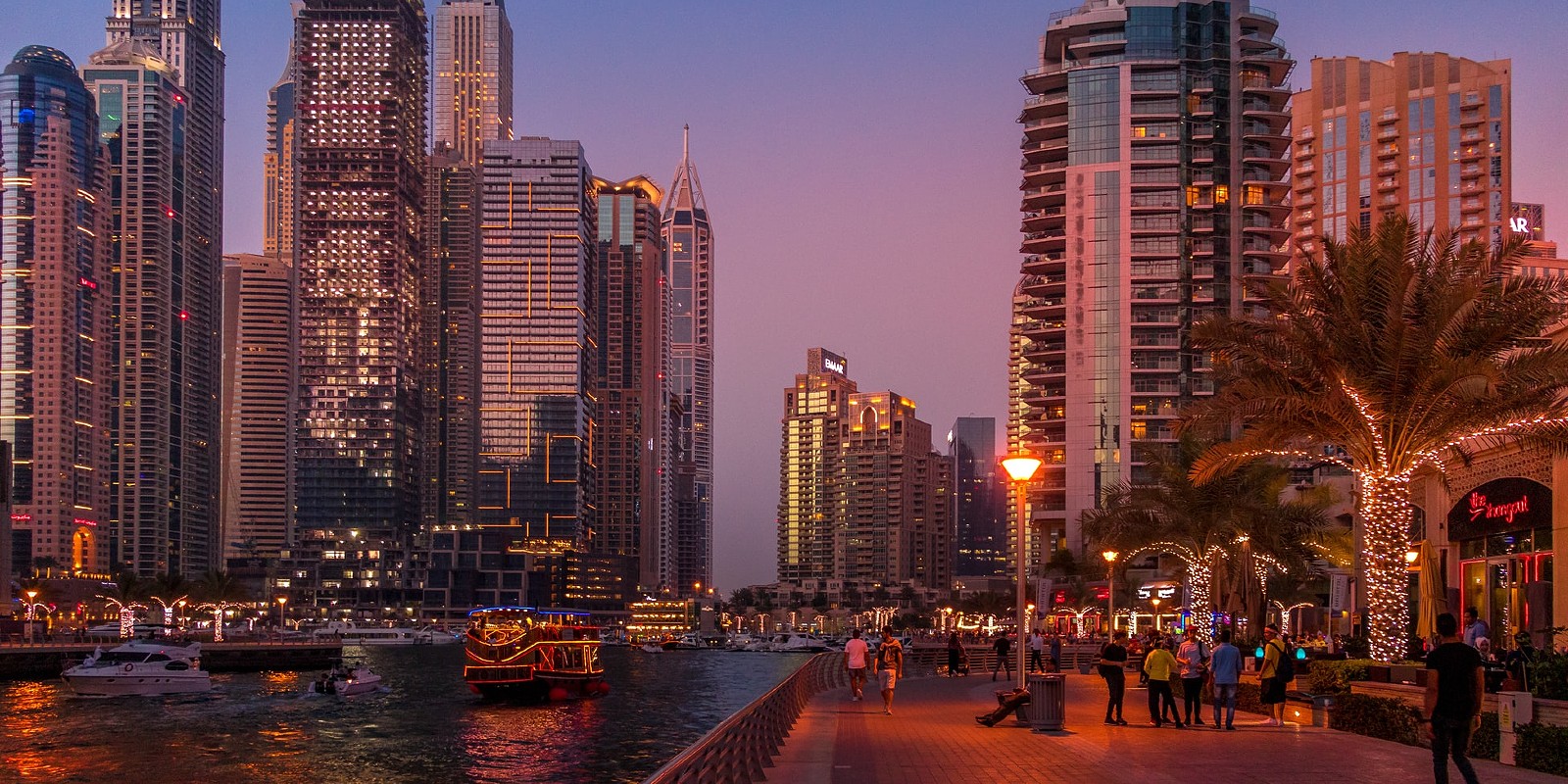7 of the Most Extraordinary Ancient Ruins in Cyprus
With human habitation dating back to the Stone Age, you’re bound to discover remarkable historic sites and ancient ruins in Cyprus.
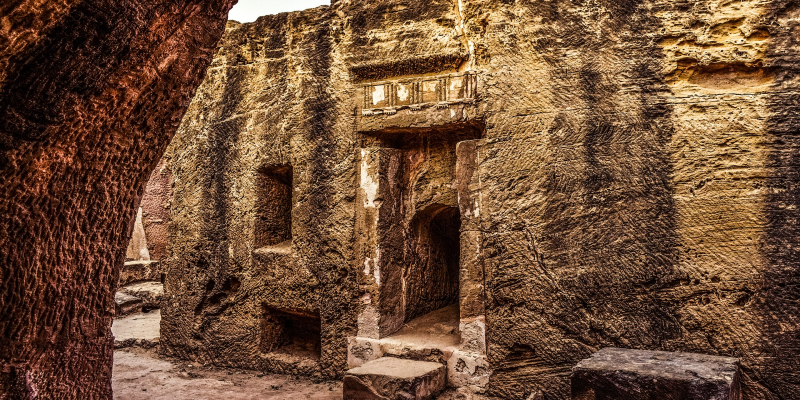
There is no shortage of extraordinary ruins in Cyprus to explore. With its natural beauty and grand history, it’s easy to see why millions of tourists visit each year. Of course, this beautiful island in the Mediterranean is also home to stunning beaches, delectable food, and friendly locals.
But, if you have a keen interest in history then Cyprus should be on your bucket list. It is home to several archaeological sites that are a must-see on your trip away. We think the best way to learn more about the deep history is by getting stuck in and exploring the sites for yourself.
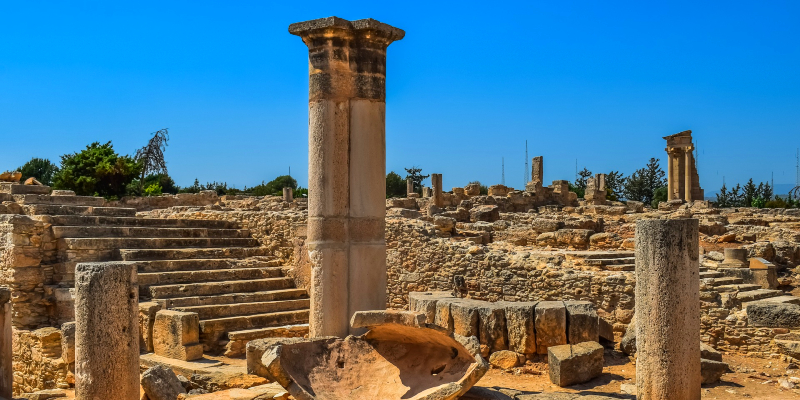
These sites won’t ruin your trip
There are an abundance of cultural and historic sites to visit in Cyprus, but we’ve narrowed it down to 7 of our favourites. If you check out at least one of these spots, your trip won’t be in ruins…
- Ancient Kourion
- Tombs of the Kings
- St. Hilarion Castle
- Ancient Salamis
- The Sanctuary of Aphrodite
- Choirokoitia Archaeological Site
- Kato Paphos Archaeological Park
Ancient Kourion
Kourion, also known as Curium, is definitely at the top of our list for the top archaeological sites to visit in Cyprus. This ancient city-kingdom is located around 19km west of Lemesos, built on the hillside to overlook the surrounding fields and sea.
On the site there are several monuments and buildings to visit. You can find a Greco-Roman theatre, forum, Nymphaeum, Public Baths, the Fountain House, the House of the Gladiators, and the House of Achilles.
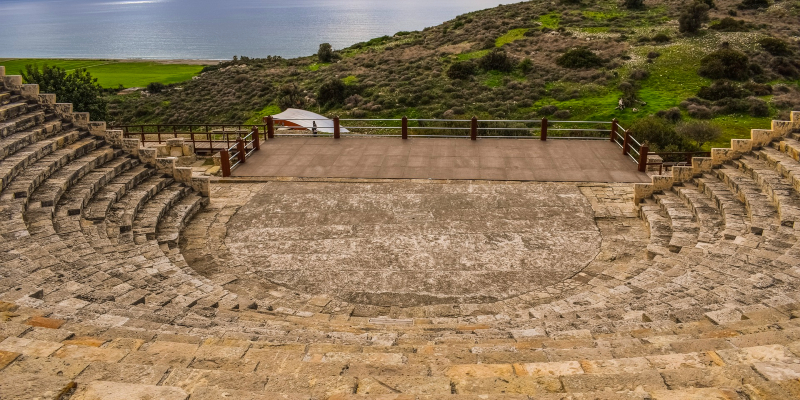
As the main focal point on the site, check out the restored theatre. This astounding Greco-Roman theatre was built in the 2nd century BC and was extended in the 2nd century AD to be used for gladiatorial games.
After that, make your way over to the House of the Gladiators and marvel at the well-preserved mosaic floors. With mosaics depicting gladiatorial combats, it’s amazing to think just how long they’ve survived on the villa floor.
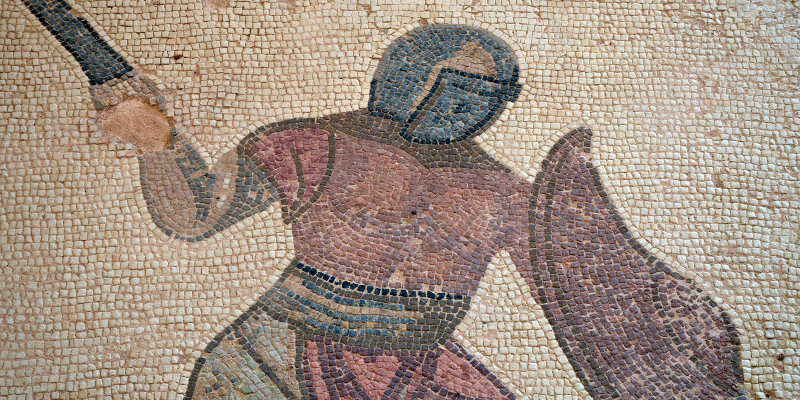
Tombs of the Kings
Sorry to disappoint but the Tombs of the Kings, are not actually the tombs of the kings. But instead, they earned their title due to the grandeur and magnificence of the tombs. This UNESCO World Heritage Site is 2km north of Kato Pafos.
These well-preserved underground tombs and chambers were the burial places of wealthy government officials and aristocrats. Therefore, you’ll find a lot of beautiful architecture carved out of solid rock, along with Doric pillars.
There is also the ancient Egyptian belief that tombs for those who have passed should be as impressive as houses for the living.
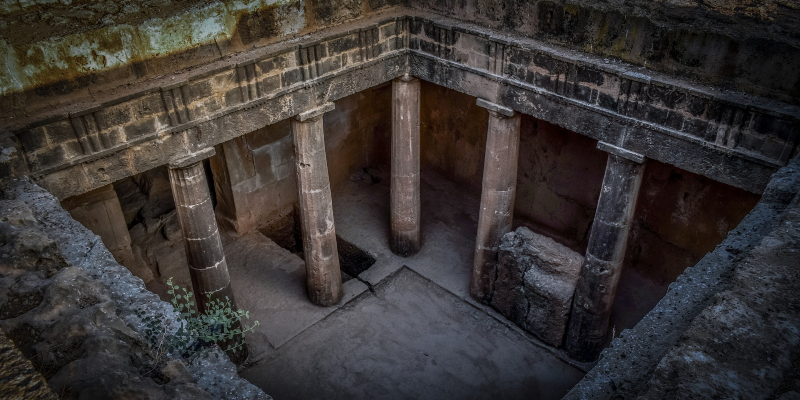
Although many of the bodies buried in the tombs had treasures and precious items, they were sadly taken by grave robbers. This means that the historical information that could have come from the goods has been lost, as official archaeologists were unable to study the items. Of course, the tombs themselves are an incredible way to provide historical information!

St. Hilarion Castle
Discover one of the best kept Crusader Castles in North Cyprus, Saint Hilarion Castle. With spectacular views of the Mediterranean and the surrounding area, these stunning castle ruins are an extraordinary must-see.
It’s perched up high on the Kyrenia mountain range, so it’s an incredible view from down below too. Although it is classed as a ruin, there’s still plenty to see and explore at the castle. Even with the damaged architecture, the remains show how spectacular the whole thing would have been.
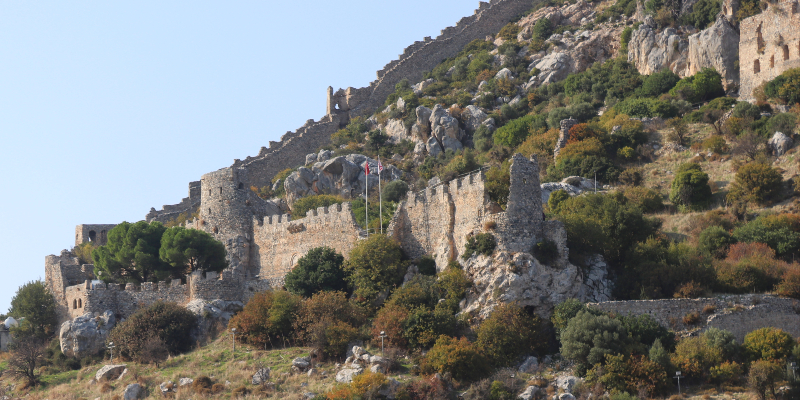
An interesting fact about the castle is that it is actually named after a hermit monk who fled from persecution and lived in a cave! It also has a deep history, originally built as a watchtower to give warning of pirates that were approaching. It finally ended up being a summer resort for Lusignan nobility before it fell into disrepair.
Although there is a lot of steep walking, it’s worth it for the incredible views at the top. The Royal Apartments in the middle section of the castle features a beautiful gothic style window, known as the Queen’s window. Here you can take in panoramic views of Northern Cyprus, and maybe even pretend you are a Queen looking out of your castle window? Whatever floats your boat!
Ancient Salamis
Explore the ruins of an ancient Roman city at the City of Salamis. Just 6km north of Famagusta lies what would have been the capital of Cyprus as far back as 1100 BC. The city prospered during the Roman period and it’s evident to see, even after the number of earthquakes it has survived.
The ruins showcase an incredible gymnasium and a theatre which held around 15,000 spectators. You can marvel at the numerous statues dotted around the gymnasium; however, most are now headless. It’s believed that they were either damaged during the earthquakes or defaced by Christians when Christianity was adopted as a state religion.
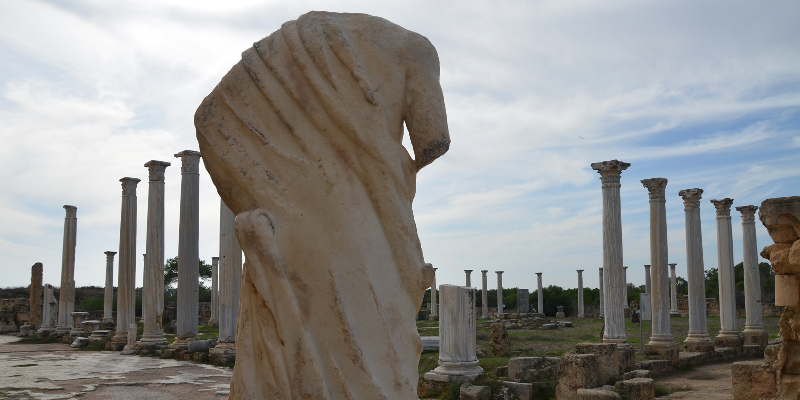
We all know how much the Romans loved their public baths, so of course these can also be found at the ruins. In the Great Hall building there is the hot bath, steam bath and the cold bath. Amazingly, there is a section of the underfloor heating cavity still standing from the central sweating room, although it’s not like the underfloor heating we know today.
The Sanctuary of Aphrodite
If you have read our Cyprus Travel Guide you may already know the story of Aphrodite and how Cyprus is her birthplace. Well, it’s only fitting that there is a sanctuary dedicated to the goddess in Kouklia Village. As the first Cypriot site to be included in the World Heritage List of UNESCO, these holy grounds also have beautiful panoramic views.
The remains date back to the 12th Century BC, so it’s amazing that there is anything left to see at the site. However, you can explore the ruins of a Roman temple, a smaller sanctuary, and a Roman house.
There is also an on-site museum which has an incredible display of items that were uncovered at the site. From household items to the cult statue, it helps understand how the Cult of Aphrodite came to be.
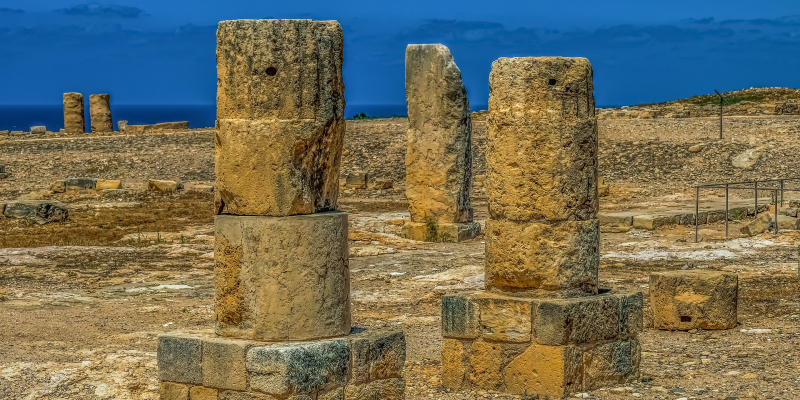
Choirokoitia Archaeological Site
This archaeological site is one of the most important prehistorical sites in the eastern Mediterranean area, and work to uncover more of the site is still ongoing today. Choirokoitia, also known as Khirokitia, is a Neolithic settlement which was occupied from the 7th to the 4th millennium BC. It’s located around 6km from the southern coast of Cyprus in the District of Larnaka.
As a well-preserved site, it continues to provide incredible scientific data about the civilisation who once resided in the village. From excavations that have been done, we know that the settlement consisted of circular houses built from mudbrick and stone. If you visit the site, you can see examples of these houses rebuilt in the original style. This really helps you to go back in time and imagine just how they lived.
An interesting fact is that one of the rituals they practiced is burying the deceased under the floors of the houses of the living. It’s believed they did this so that the dead would always remain close their living relatives.
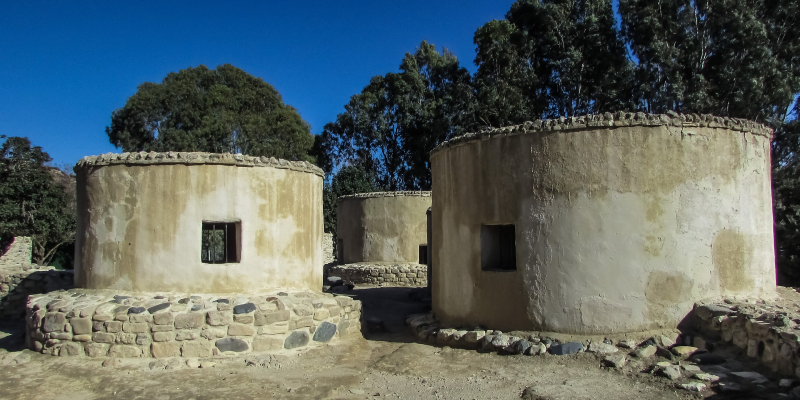
Kato Paphos Archaeological Park
Although this UNESCO World Heritage Site is home to Tombs of the Kings, the Archaeological Park of Kato Pafos still has so much more to offer alongside. Including monuments and houses from the prehistoric eras until medieval times, this park is very impressive. Most impressively of all are the mosaic floors within the 5 Roman houses.
Depicting scenes from Greek Mythology, you will be wowed by the elaborate and ornate décor that is still preserved today. There are so many mosaics to marvel at at the site. Check out the House of Theseus which is a 2nd Century villa and is the largest building of all known public buildings from the Roman period in Cyprus. Here you will find an incredible mosaic showing the scene of Theseus fighting the Minotaur.
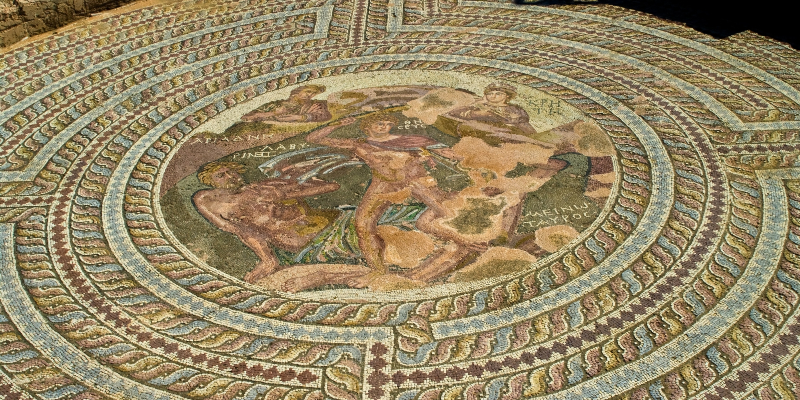
There are so many attractions to visit at the park, you could spend the whole morning wandering around the magnificent ruins. You can explore the ancient Odeum, a theatre made up of 12 rows of seats, which still holds performances today! Or discover the Asklepieon which was a temple dedicated to the God of Medicine.
These adventures will never get old!
The historians out there will love exploring these sites. But even if you’re not that into history, these trips out provide a great chance to take in all of Cyprus’ beautiful scenery.
If you’re looking to book a stay in Cyprus, why not consider Azia Resort & Spa? A modern and contemporary resort with incredible amenities. Just click the button below to find out more…




